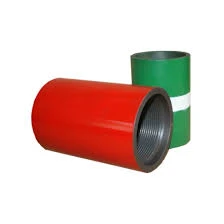- Afrikaans
- Albanian
- Amharic
- Arabic
- Armenian
- Azerbaijani
- Basque
- Belarusian
- Bengali
- Bosnian
- Bulgarian
- Catalan
- Cebuano
- Corsican
- Croatian
- Czech
- Danish
- Dutch
- English
- Esperanto
- Estonian
- Finnish
- French
- Frisian
- Galician
- Georgian
- German
- Greek
- Gujarati
- Haitian Creole
- hausa
- hawaiian
- Hebrew
- Hindi
- Miao
- Hungarian
- Icelandic
- igbo
- Indonesian
- irish
- Italian
- Japanese
- Javanese
- Kannada
- kazakh
- Khmer
- Rwandese
- Korean
- Kurdish
- Kyrgyz
- Lao
- Latin
- Latvian
- Lithuanian
- Luxembourgish
- Macedonian
- Malgashi
- Malay
- Malayalam
- Maltese
- Maori
- Marathi
- Mongolian
- Myanmar
- Nepali
- Norwegian
- Norwegian
- Occitan
- Pashto
- Persian
- Polish
- Portuguese
- Punjabi
- Romanian
- Russian
- Samoan
- Scottish Gaelic
- Serbian
- Sesotho
- Shona
- Sindhi
- Sinhala
- Slovak
- Slovenian
- Somali
- Spanish
- Sundanese
- Swahili
- Swedish
- Tagalog
- Tajik
- Tamil
- Tatar
- Telugu
- Thai
- Turkish
- Turkmen
- Ukrainian
- Urdu
- Uighur
- Uzbek
- Vietnamese
- Welsh
- Bantu
- Yiddish
- Yoruba
- Zulu
Exploring the Dynamics of Coupling in Complex Systems
Understanding Coupling Blanks A Key Component in Mechanical Engineering
In the realm of mechanical engineering, the design and application of components dictate the efficiency and effectiveness of machinery and systems. Among these components, coupling blanks play a pivotal role. Understanding what coupling blanks are, their functions, and their applications is essential for engineers who seek to optimize machinery performance.
What are Coupling Blanks?
Coupling blanks are intermediate pieces used to connect two shafts or shafts to other components, effectively transmitting torque and rotational motion. These blanks are typically made of durable materials such as steel, aluminum, or plastic, depending on the application requirements. The term “blank” often refers to the raw or unfinished state of a component, indicating that further machining or processing may be required to achieve the desired specifications.
Types of Coupling Blanks
Various types of coupling blanks exist, each serving distinct purposes based on the mechanical system’s needs. Common types include
1. Rigid Coupling Blanks These are designed to maintain a fixed connection between shafts, ensuring that they rotate in unison without any relative displacement. Rigid coupling blanks are ideal for applications requiring precise alignment where misalignment should be avoided.
2. Flexible Coupling Blanks In contrast to rigid ones, flexible coupling blanks account for angular misalignment, parallel misalignment, and axial movement. They are designed to accommodate slight discrepancies in alignment, making them suitable for applications involving vibrations or thermal expansion.
3. Universal Coupling Blanks These blanks allow for the connection of shafts that are not aligned in a straight line. Universal couplings can transmit torque while accommodating a certain degree of angular misalignment, which is invaluable in complex machinery setups.
Applications of Coupling Blanks
Coupling blanks find applications across a variety of industries and systems, including
- Manufacturing Equipment In factories, machinery like conveyors, gearboxes, and pumps often use coupling blanks to connect motors to driven equipment, facilitating efficient energy transfer
.coupling blank

- Automotive Engineering Vehicles utilize coupling blanks in drivetrains to connect various shaft components, helping to ensure smooth power delivery from the engine to the wheels.
- Aerospace The aerospace industry employs coupling blanks in various components to ensure reliability and precision in systems such as propulsion and navigation.
- Robotics In robotic systems, coupling blanks help in connecting motors to arms or wheels, allowing for precise movements and operations.
The Importance of Material Selection
The performance of coupling blanks is closely tied to the materials used in their construction. Engineers must carefully select materials based on factors such as strength, weight, resistance to fatigue, and environmental conditions. For example, in high-stress applications, using higher-grade steel might be necessary, while lighter applications may benefit from aluminum or plastic to reduce overall weight.
Design Considerations
When designing coupling blanks, engineers must consider various parameters, including the torque requirements, operating speeds, misalignment allowances, and environmental factors like temperature and corrosive conditions. Properly designed coupling blanks can prevent mechanical failures, reduce downtime, and enhance overall system reliability.
Future Trends and Innovations
As technology continues to evolve, coupling blanks are also subject to innovation. Advancements in materials science, such as the development of composite materials, are paving the way for lighter and stronger coupling solutions. Additionally, the rise of smart manufacturing could lead to the incorporation of sensors in coupling blanks, providing real-time data on stress, wear, and alignment. This data can facilitate predictive maintenance, ultimately leading to increased efficiency and reduced operational costs.
Conclusion
Coupling blanks may seem like a small component in the vast world of mechanical engineering, but their significance cannot be overstated. They play an essential role in ensuring the seamless connection between mechanical elements, ultimately driving the efficiency and performance of various systems. As industries continue to demand higher performance and reliability, the importance of coupling blanks and advancements in their design and materials will become ever more critical. Understanding and leveraging these components effectively is essential for engineers striving to push the boundaries of innovation in their respective fields.
-
Tubing Pup Joints: Essential Components for Oil and Gas OperationsNewsJul.10,2025
-
Pup Joints: Essential Components for Reliable Drilling OperationsNewsJul.10,2025
-
Pipe Couplings: Connecting Your World EfficientlyNewsJul.10,2025
-
Mastering Oilfield Operations with Quality Tubing and CasingNewsJul.10,2025
-
High-Quality Casing Couplings for Every NeedNewsJul.10,2025
-
Boost Your Drilling Efficiency with Premium Crossover Tools & Seating NipplesNewsJul.10,2025







